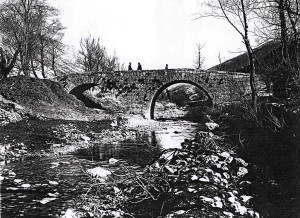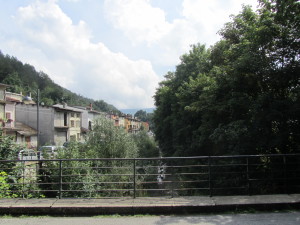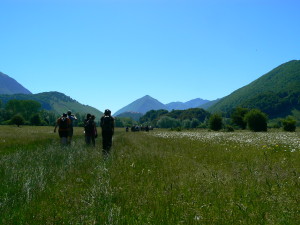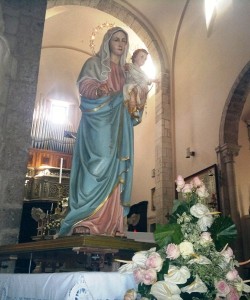


Pescasseroli, with its Castle, became a major medieval stronghold of the Park, so as to give its name to the cattle track. This line of communication remains a witness of the times and civilizations. In 1447 the King of Naples Alfonso of Aragon established the Regia Dogana della mena delle pecore (Royal Custom of the Sheep Transhumance). Although before the Romans (8th-7th century BC) the track was ploughed by the Samnites until the Apulia today is traced for trekking tourism and cultural events.

It is likely that the sheep track in Italic-Roman age departed from the plain of Fucino, through the Giovenco Valley until Campomizzo. In Pescasseroli, near the beginning of the path, remote smalls sheep tracks arrive and there is the Bridge of Santa Venere, formerly called Venera. Along with the Bridge of Chiavoni and the Bridge of Autostello (or of the Trough), it is for the village one of the three historical and major crossings on the River Sangro.

This bridge is a symbolic site of the journey between the alpine Abruzzo and the Tavoliere delle Puglie (Table of the Apulias). The adventurous walk along the cattle track used to start on the first Sunday of October, with the Madonna of the Rosary, or of the Victory, to whom shepherds were devoted, together with the Crowned Black Madonna. In 10-15 days they reached the lowlands. All able-bodied men, and many young boys left. Livestock, led to the sound of cowbells, was mainly ovine and then bovine. In June, they returned back home. Rites, stories and traditions of transhumance in Pescasseroli were sung by the poet-priest Cesidio Gentile, known as Jurico, born in a house behind the Church of Carmel.
The name Santa Venere (also of the road, then SS 83) is probably due to geographical, historical and cultural links with a namesake that is in Puglia. Along the River Ofanto, on the other end of the sheep track that leads to Candela (Foggia), there is an ancient and famous Bridge of Santa Venere, in Rocchetta Sant'Antonio. That bridge of the Roman Empire was called Pons Aufidus (old name of the River Ofanto) and was part of the Via Appia Antica
In addition, the name might recall the Mount Venere and the homonymous hamlet of the town of Pescina, on the edge of the Fucino basin. In the first written document about Venere dei Marsi, dating back to 150 BC, the village is mentioned as well as the temple for the worship of the goddess Venere Mirtea, erected in honour of the peace between the Romans and the Marsi.
Text by Stefano Dark – Images by Stefano Dark and NPALM
RESERVED REPRODUCTION – All rights are of the respective owners

